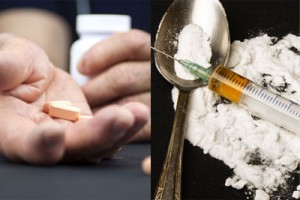 It’s been obvious for the last few years that plenty of people were getting addicted to prescription opiates first and then migrating to heroin because it was cheaper and more accessible. A new report makes it clear that far more people are going down this path than I ever thought.
It’s been obvious for the last few years that plenty of people were getting addicted to prescription opiates first and then migrating to heroin because it was cheaper and more accessible. A new report makes it clear that far more people are going down this path than I ever thought.
For many decades, people might start with alcohol or marijuana and then make their way to cocaine or heroin. In the 1960s and 1970s, according this this report from NationalPainReport.com, heroin users were mostly male members of minorities, living in the inner cities.
Fast forward to the last several years. Prescription drug use has exploded in the last decade or so. Between 1999 and 2010, the number of opioid prescriptions being written quadrupled. I really don’t think our pain quadrupled so that means that doctors changed the reasons they would give out these drugs. Which are addictive.
The Move to Heroin
In 2010, the formulation for OxyContin changed so that it became tamper-resistant. Shortly after, the OxyContin formulation for Canada also changed. OxyContin was renamed OxyNeo for Canadian patients. When I saw this news, I thought it was obvious that this change would drive people immediately to heroin. And soon, small town newspapers began to carry just this kind of report – young people in their midst who were dying of heroin overdoses when there had previously never even been much heroin in that town or suburb.
Really, it seems like doctors, addiction or rehab professional and government officials involved in monitoring drugs and substance abuse should have been able to see this coming. But maybe they thought a reformulation was better than not taking any action at all.
But now, according to this report, three out of four heroin users started using prescription opiates before migrating to heroin. Given the dangerous unpredictability of heroin potency, that trend spells out plenty of tragedy for our families in suburbs and small towns.
In another story from Associated Press, there’s this quote: “DEA Deputy Assistant Administrator Joe Rannazzisi says it is ‘outrageous’ that the U.S. consumes 99 percent of the world’s hydrocodone — the most prescribed medicine in the country.” Rannazzasi later refers to the overuse of painkillers as “a national tragedy that is not being addressed.”
From where I sit, I can help this situation by making it easier for the addicted to find rehabilitation. I am grateful for this opportunity. If you care about someone who needs help, please contact us at 1-800-775-8750.
http://americannewsreport.com/nationalpainreport/study-finds-most-heroin-users-start-with-painkillers-8823937.html
http://bigstory.ap.org/article/federal-views-diverge-proper-use-painkillers